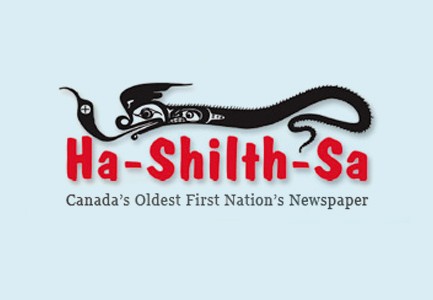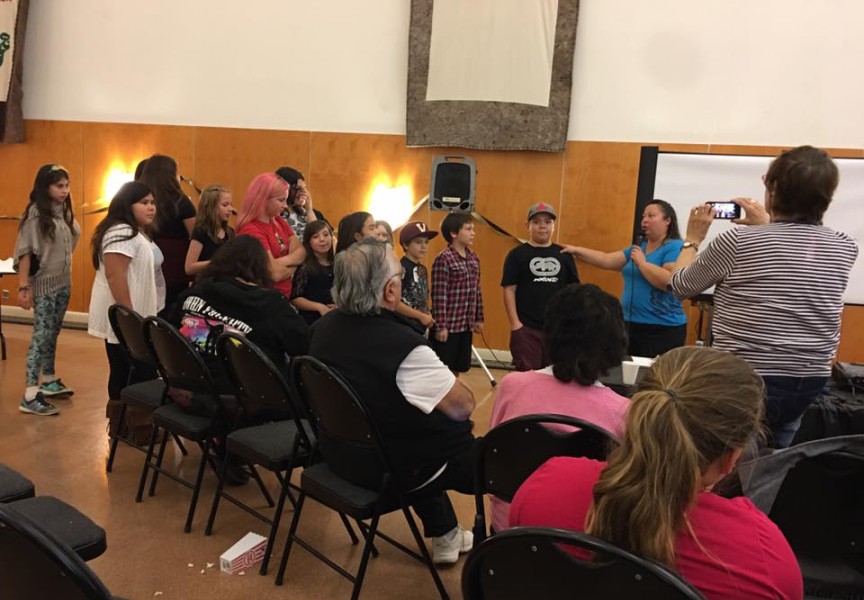If the sporties are hunting elk, so are Tseshaht hunters, said Chief Councillor Hugh Braker.
“You cannot claim there is a conservation problem and at the same time allow five sport hunters and one guided hunter to go into Nahmint,” Braker said of the licenses the province issued this season in the territory. The aboriginal right to harvest comes second only to conservation. The sports hunt is further down the list of priorities.
For 25 years or more, the province has limited Tseshaht’s elk harvest to one per year.
“For a community of 1,200 people, that’s not enough,” said Braker. So, when it was learned the province was issuing sports hunting licenses, Tseshaht devised its own Elk Hunting Plan, which was submitted to the province, and rejected.
“The province doesn’t want to talk to us on this issue.”
Braker said he had received a letter from the province asking if he would like to talk. He sent a letter back saying yes, he would, and he hasn’t heard from anyone since, except to receive a letter saying BC was opposed to the Tseshaht harvest.
This year Tseshaht has issued 11 tags to its hunters, and, as of Feb. 1, seven of the tags had been filled.
The rules for harvesting are based on Tseshaht culture, said Braker. There is a responsibility to harvest in a way that does not endanger the continued existence of the herd or the genetic diversity of the herd, and every hunter that bags an elk must give half of it to the community.
“The first few elk that were harvested, the hunter took half and the other went to elders, disabled and widowed,” Braker explained. The elders got elk roast. “The next few that were harvested, the hunter got half, and half went into the community freezer to be used for funerals, potlatches… If we’re successful in our continued harvest, the next few elk will be distributed to the community in general.”
Tseshaht has identified a number of herds traveling in their territory. Each hunter has their own area in which to hunt in an effort to minimize the effect on any one of those herds.
“The last elk was harvested by Tseshaht last week (end of January). It was a very good elk. A five-pointer,” said Braker.
The population of Tseshaht was very excited over the feast of elk they had at their community Christmas party. It was, for some, the first taste of elk in their lives. For others, it was the biggest feast of elk in recent years.
Historically, the Alberni Valley had very large herds of elk, said Braker, and historically, Tseshaht hunted elk with a dead fall system that involved a large log swinging across the path of a herd.
Port Alberni inlet is the dividing line in regards to the health of the current herds, Braker explained. Anything south of the inlet the elk are endangered. North of the inlet the elk are doing reasonably well. And in a few places at the very north of the island the elk herds are quite large. The Roosevelt elk that populate this region are the biggest elk in the world, Braker said.
“We’d like to work with the province, but if they are not going to, if they are just going to be confrontational, and just do what they want to do, then it’s really unfortunate, because I think both of us could benefit from a planned hunt,” Braker said.
“We ask our hunters to tell us where and when the kill was made, whether there were other elk nearby, and if so what the sexes were…. All sorts of information that we try to collect.” Braker said the province does a fly over once a year to determine elk populations. Tseshaht has people out in the bush all the time bringing information back. The province has only two officers in the entire Alberni District, which is huge. Wildlife officers rely on the citizens of the area to report.
“Really, we wish we could work with them more.”
There has been some unregulated hunting in Tseshaht territory that the nation is looking for information about and is under the investigation of the ministry. There was a significant number of remains found in the Museum Creek area, said Braker; one partial carcass with harvestable meat left on it, and other gut bags nearby.
“We were appalled that someone would harvest so irresponsibly. We do believe in hunting elk, but you have to do that responsibly, in a way that does not endanger the herd, the continued existence of the herd or the genetic diversity of the herd. When you go in and kill five animals all at once, you are threatening the continued existence of the herd, so we were quite appalled by it.”
A call was placed to the province for comment on Tseshaht's elk hunting plan. So far, we haven't heard back.
Related: http://www.hashilthsa.com/news/2012-07-12/tseshaht-has-more-just-interest-roosevelt-elk







